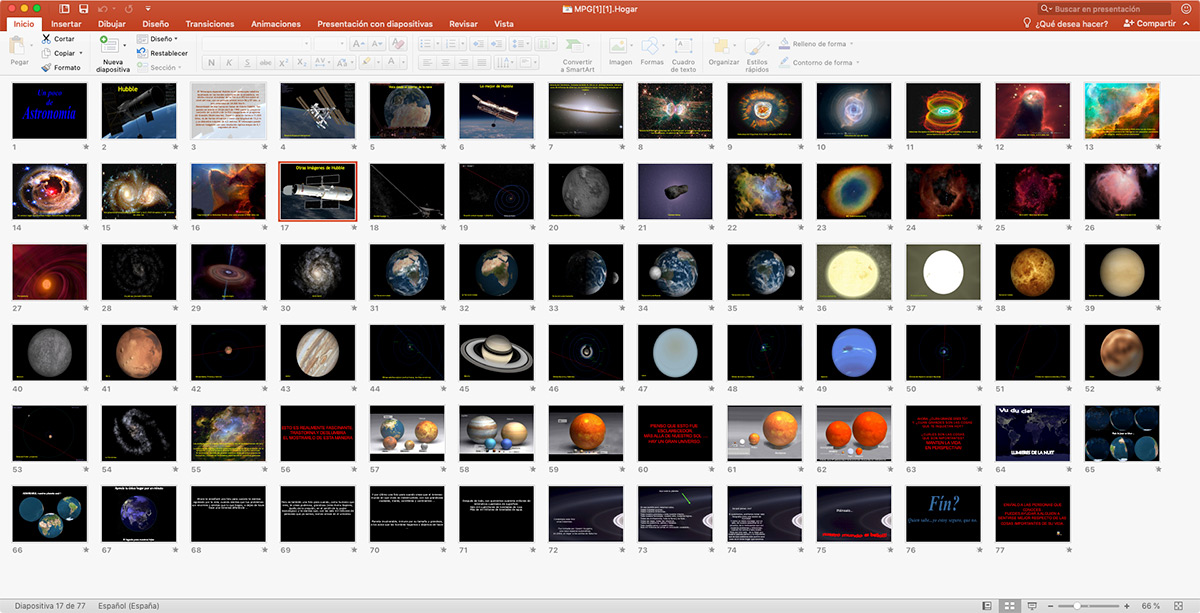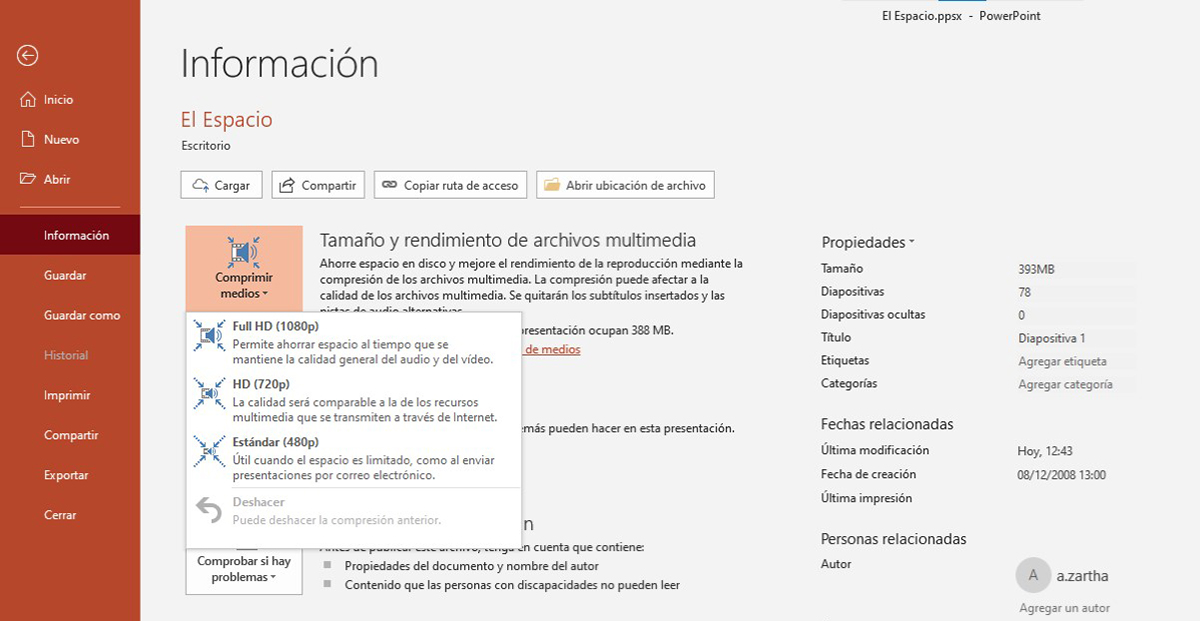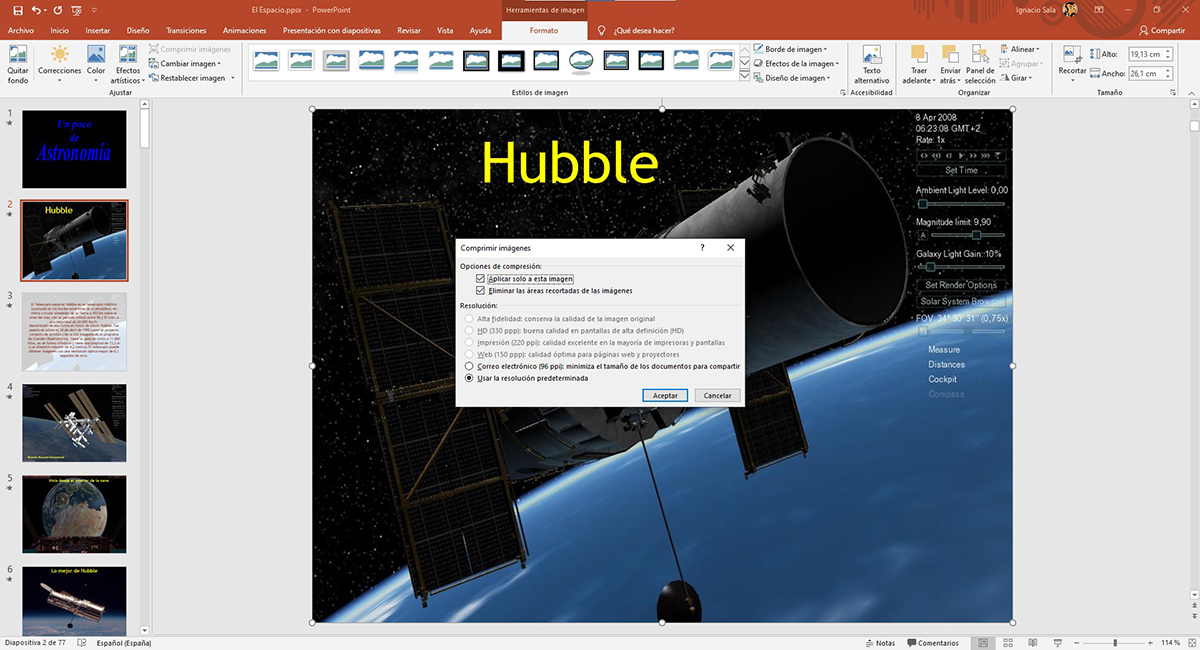
PowerPoint has become on its own merits the best application we have at our disposal to create presentations of any kind, whether with images, videos, music, interactive graphics ... Anything that comes to mind is available in PowerPoint, although sometimes some functions are not easy to find.
As the saying goes: The more sugar, the sweeter (but not healthier). This saying applies perfectly to the presentations we create through PowerPoint. The more images, videos (if it is not an external link) or audio files we include, the space that the resulting file will occupy will have a larger size.
If the presentation is going to be done in person, the space occupied by the final file really matters very little, since premium quality of content above all. However, if we have to share the file with other people (such as clients), we cannot present a 500MB file to you via a link to a cloud storage system. The only option in these cases is to reduce the quality of the file by compressing the PowerPoint.
When we talk about compressing a PowerPoint, I am not talking about using a Zip type application, which forces the recipient to decompress it (if they know how), but rather using the native compression method that Microsoft itself offers us through PowerPoint, a compression system that is responsible for reducing the final size.
Compress a Powerpoint
PowerPoint offers us three options when compressing the file that we have created, options that are adapted to the use and purpose that we plan to do with it and the content that includes.
If you include any video or audio files, PowerPoint will offer us, within the menu File> Information the option Media file size and performance. If you do not include any type of video or audio file, this menu will not appear. The three options it offers us are:
PowerPoint compression options

- Full HD (1080p). This compression option allows us to reduce the final file size by modifying the resolution of the video or videos that we have included up to 1080p while maintaining the audio quality.
- HD (720p). In this second option, the video quality is reduced to 720p, the standard quality that we can currently find on YouTube without going any further.
- Standard (480p). If we want to minimize the final file size, we must select Standard 480p, an ideal option if we want to share the resulting file by email.

Once we are clear about the type of compression we want to use, we must click on it to start the compression process, compression that only affects the video (and its corresponding audio) that we have added to the presentation. In this case it is a 25 minute video at 720p resolution. This compression method also compresses the size of the images, although this option is also available when videos or audio files are not included.
To give you an idea of the size reduction that we can obtain, below I show you the Results obtained after compressing the PowerPoint file using the three compression methods. The initial archive file, which includes a 25-minute video at 1080p resolution, is 393 MB.
- Compressing the PowerPoint file with a 25 minute video at 720 resolution using the compression method Full HD (1080p): 1.7 MB. Practically the same. As it is an option to reduce the resolution of the video, and it is in 720p resolution, it will not increase its size to adapt it to 1080p, it is about reducing the space it occupies, not adjusting the resolution.
- Compressing the PowerPoint file with a 25 minute video at 720 resolution using the HD compression method (720p): 8 MB. The video is in the same resolution as the compression format that we have used, so the reduction we obtain is also minimal.
- Compressing the PowerPoint file with a 25 minute video at 720 resolution using the compression method Standard (480p): 54 MB. Although the compression is not very high, if the final size of the file has been reduced.
One aspect that we must take into account when adding videos to PowerPoint presentations is its purpose: office presentation, sending by email ... since depending on its purpose, we can choose to add videos in their original resolution or use the lowest possible resolution without thereby losing quality of reproduction.
Compress images in PowerPoint

If the presentation we have created only includes images, the option Size and performance of multimedia files will not be displayed in the Information menu of PowerPoint, since only videos and audios are considered multimedia content. By showing us this option, PowerPoint forces us to use the specific function available in the application to reduce the size of the images in order to reduce the final size of the file that we have created.
To reduce the size of the images that we have included in a PowerPoint file, we must perform the following steps:
- First, we must select any of the images that are part of the file.
- Next, we go, inside the tape, to Format.
- Within Format, on the left side, click on Compress images.
- A dialog box will then appear with the option Apply only this image (We must uncheck this box so that all the images in the file are compressed).
- Next, we must establish what resolution we want the included images to preserve from the following options
- High Fidelity: Preserves the quality of the original image.
- HD- perfect for HD resolution displays
- Impresión: Quality that will allow us to print the slides at a good resolution and will be displayed with excellent quality on any screen.
- Website: This option is the one that we must select if we are going to make the presentation via the web or through a projector.
- Email. Reduce the size of the file to the maximum to be able to send it by email.
- Use the default resolution. This option preserves the original resolution of all images that are part of the presentation.
Once we have established the format that we want all the images in our file to offer, we must save changes so that we can see how much PowerPoint file space has been reduced.